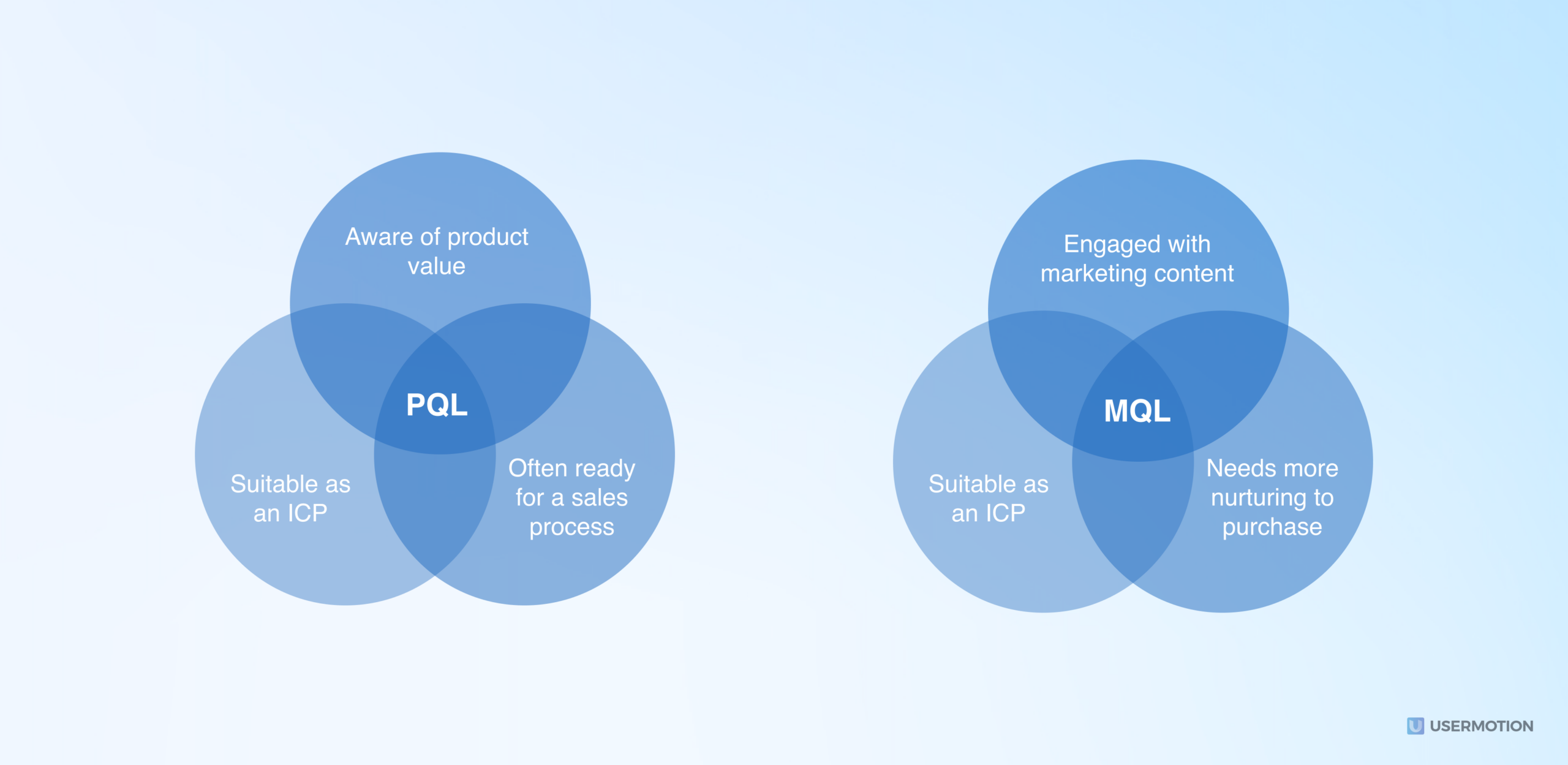Understanding lead types in SaaS can feel like uncovering a hidden code. Today, we’ll compare PQL vs MQL, explain why and how businesses use them, and discuss how to improve your PQL efforts.
TL;DR
- Marketing-qualified leads are potential customers who show interest in your product or service through marketing materials thanks to your marketing team’s efforts.
- Product-qualified leads are potential customers who display interest in your product or service because they have experienced your product firsthand and are aware of your product value.
- There are several differences between these two lead types, including conversion probability, customer journey stages they’re in, and qualification criteria.
- Most SaaS businesses prioritize PQLs since they are already interested in your product, often ready for a sales interaction, and show a higher tendency to convert.
- To increase the number of leads that are product-interested, you can deploy a lead scoring system, increase PQL visibility, take more data-based actions, and make use of learning mechanisms.
What is a Marketing Qualified Lead (MQL)?
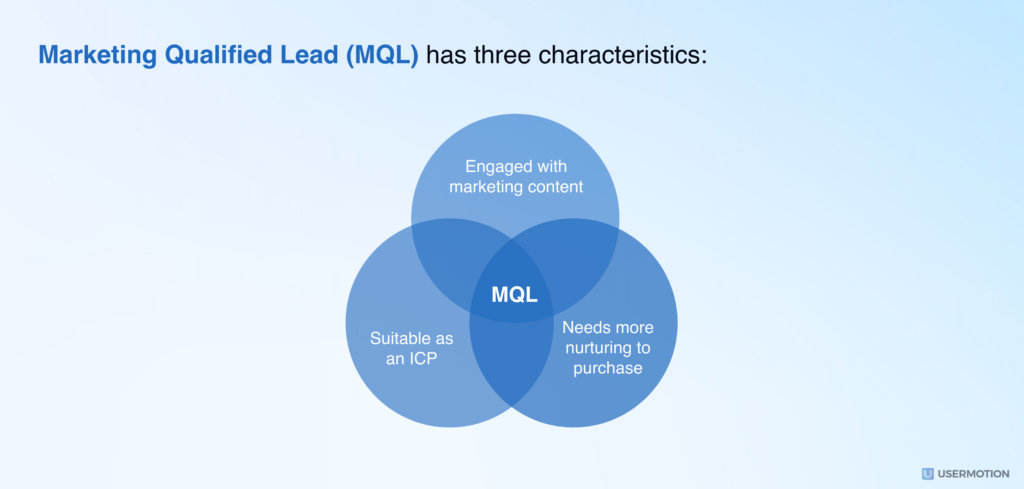
Marketing-qualified leads (MQLs) involve potential customers who display a certain level of interest in a product or service through the efforts of marketing teams.
To have engaged with your marketing content or activity before, these users are inclined to be content with receiving a sales call.
Let me break down which activities count as marketing engagements for a potential customer to be considered a MQL:
- opening marketing emails
- attending webinars
- downloading ebooks
- interacting with social media content about a product
- and even website visits, including blog and product-related pages.
Another criterion for MQLs is to correspond to the company’s preferred demographic and firmographic data fit—just like the ideal customer profile (ICP).
This step includes specific business characteristics matching the product’s ICP, which usually contain company size, job title, location, and industry.
It’s crucial to note that MQLs make up a part of potential customers that businesses approach within their existing customer relationship management (CRM) database.
What is a Product Qualified Lead (PQL)?
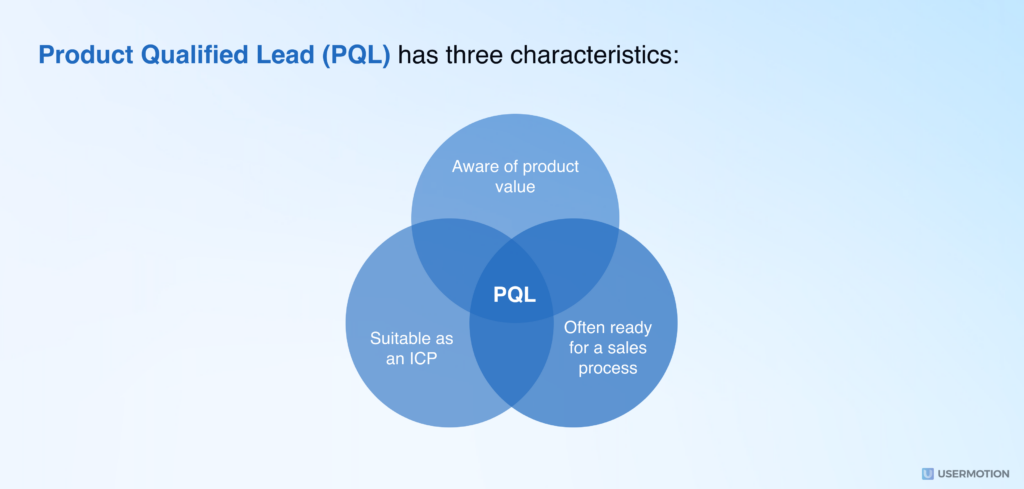
Product qualified leads (PQLs) include users who haven’t only expressed interest in a product or service through marketing materials but also through product engagement.
Product-qualified leads continue the sequence that marketing-qualified leads form by providing sales teams with certain product usage and activity data.
As potential customers who actively engage in valuable interactions with the product, PQLs differ from MQLs since they’re able to support sales teams with specific details:
- number of logins,
- number of members invited,
- key feature usage,
- number of users in an account,
- time spent reviewing the pricing page.
Thanks to these details and PQL metrics, sales teams can spot leads who get to experience the product first-hand and understand the product value, indicating a higher likelihood of conversion.
Within the product-led growth strategy, PQLs carry the highest importance since the product-led growth concept itself marks the product as the primary driver for user acquisition and conversion.
PQL vs MQL: What’s the Difference?
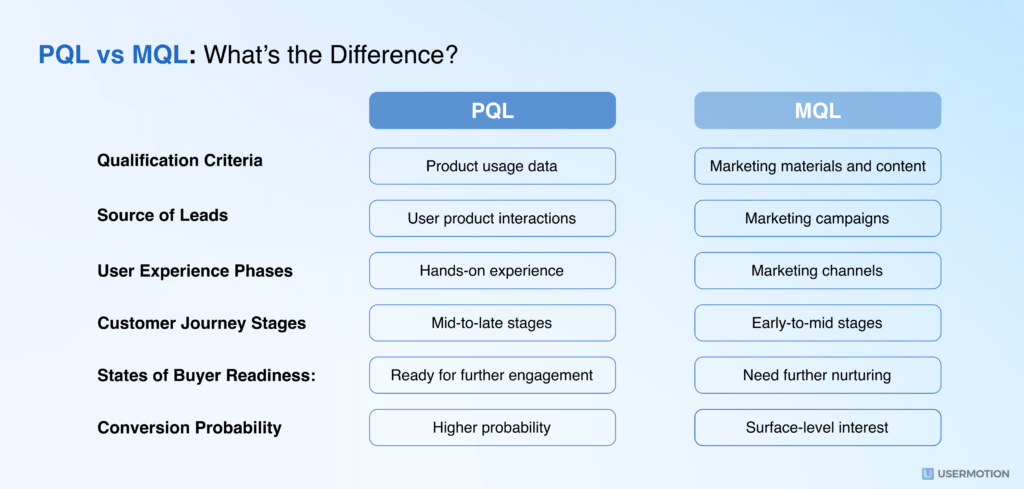
We’ve learned a lot about PQL vs MQL, but not deeply talked about the different characteristics. There are more elements to list when it comes to the differences between these two lead types, such as:
1️⃣ Qualification Criteria. While the criteria for MQLs consist of marketing campaigns and content, it’s the active use of product features for PQLs.
2️⃣ Source of Leads. MQLs derive from the efforts of marketing teams through campaigns and materials, making it marketing-centric data. PQLs, on the contrary, are acquired through the user interactions within the product, creating product-centric data.
3️⃣ User Experience Phases. PQLs have hands-on experience with the product and know the product value as a result. Yet, MQLs tend to be interested in marketing channels only and may not have interacted with the product directly.
4️⃣ Customer Journey Stages. While MQLs are at the early-to-mid stages of the customer journey, PQLs are apparent throughout the mid-to-late stages.
5️⃣ States of Buyer Readiness. At the start of their journey, MQLs need further nurturing through additional marketing interactions before they hop on a sales call. In contrast, PQLs are likely to be ready for more direct communication with the sales team due to the prior experience they have with the product.
6️⃣ Conversion Probability. Having a deep product understanding, PQLs have a higher probability of turning into paying customers. However, the conversion likelihood of MQLs who have a rather surface-level interest depends on further engagements with the sales team.
The Reason Why We Prioritize PQLs
Generally speaking, businesses (especially the ones that follow product-led growth strategy) put more importance on PQLs because:
1. PQLs have actually tried your product
PQLs try your product or service out, learn the key features over time, and need less time to adopt it.
That’s why product-qualified leads should never be underestimated—they express interest in your product.
Unlike marketing-qualified leads, product-qualified leads are promising leads who spend enough time with your product to utilize the key features, taking a step towards the adoption process.
Thanks to PQLs’ product-centric engagement, businesses can skip the awareness stage of the customer journey and directly move to the consideration stage.
Businesses can better use their resources when they spend time on leads who have already shown a real interest when the process moves faster.
2. PQLs are always one step ahead in the customer journey
PQLs are further along in the customer journey than MQLs, who start the sales process. These leads move the buying process forward by looking at and analyzing more than MQLs.
The difference makes PQLs more ready for direct sales since they actively use your product or service. They are more open to direct sales communication, which streamlines the sales process.
3. PQLs have a higher tendency of conversion
This time, let me emphasize the importance of helping customers achieve their “aha” moment. After their “aha” moment, customers learn your product’s worth and why it’s crucial to their workflow.
Conversion prediction also depends on the “aha” moment. PQLs are more likely to convert than MQLs who have mostly interacted with marketing content. They have used the product or service, increasing their likelihood of becoming customers – they have more product expertise.
After learning why PQLs are better than MQLs, let’s look at techniques to recruit them:
To Add More PQLs into Your Sales Funnel…
Knowing the advantages that product-qualified leads bring to the table, it’s only natural for you to extend the number of PQLs in your sales process.
Let’s check how we can do so:
1. Integrate a predictive lead scoring system
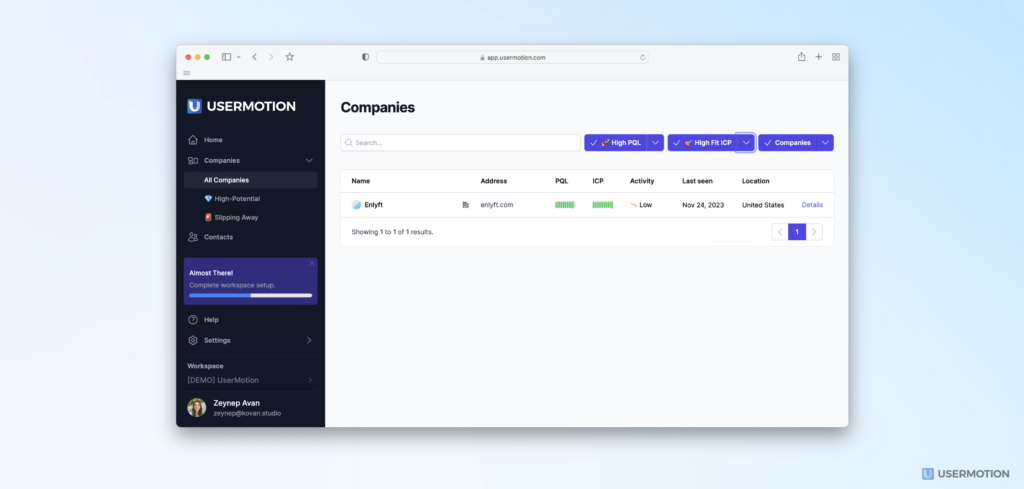
The first step is to implement a lead scoring system, which will streamline the process of identifying and prioritizing potential PQLs. This process is often based on product interactions and alignment with the ideal customer profile (ICP).
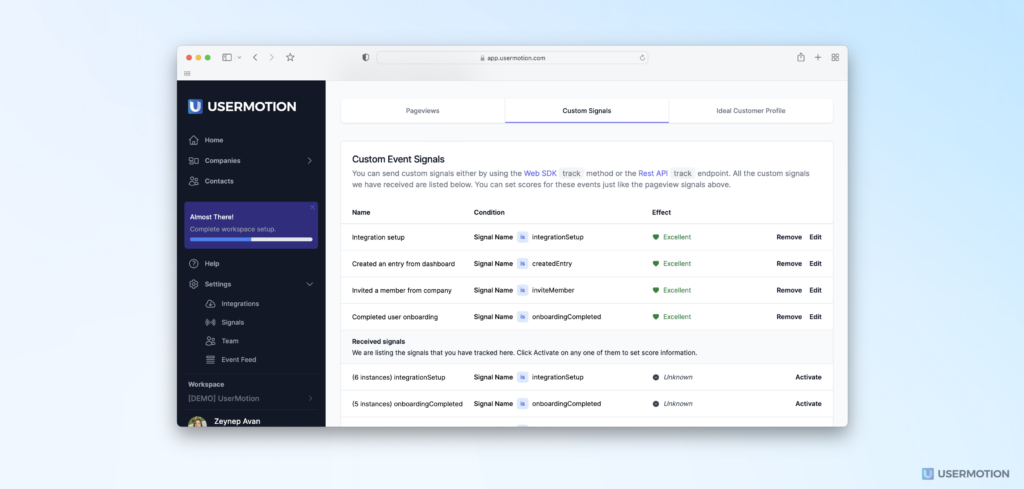
Let me also put more light on the lead scoring system: Businesses will be assigning signals for key product-related actions to measure the amount of high-intent behaviors. These product-related actions include feature usage, account setup completeness, and engagement with critical functionalities.
2. Increase PQL visibility
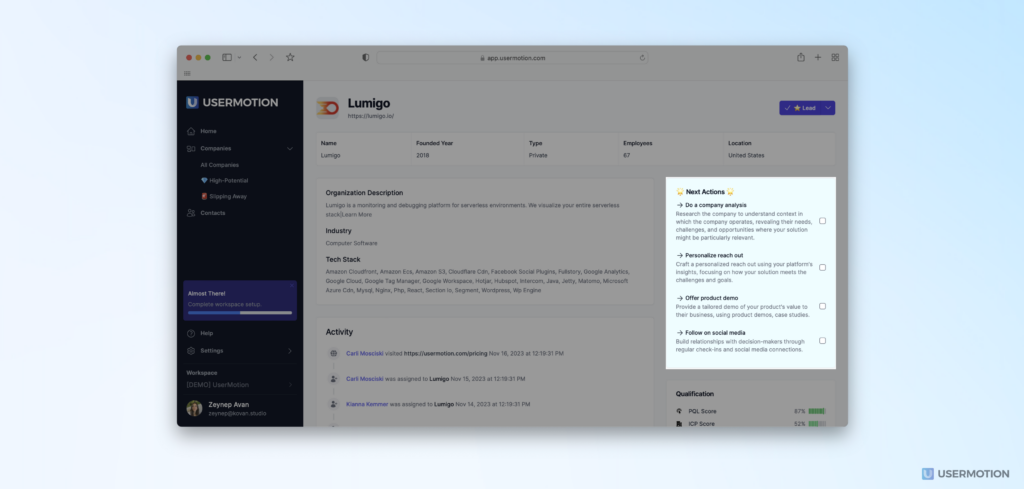
For this step, you’ll need materials to guide salespeople, such as sales playbooks and guidelines. With these valuable materials, sales teams can effectively engage with potential customers.
With certain strategies, salespeople will be capable of addressing the needs and expectations of these users who actively interact with your product or service.
This isn’t all, though.
You should also make sure that your sales team has a platform in which they can easily access and check PQL information.
To do so, you might need to integrate PQL data into your CRM tool or any other sales platform that you’re currently using.
This will provide your sales representatives with a comprehensive view of leads’ product engagement and readiness for conversion.
3. Take actions according to the insights you get
Sales teams can automate some actions based on PQL status to streamline self-conversion by users and leave larger opportunities to be taken care of by account executives.
The automated procedures that are triggered by PQL statuses contain elements like personalized product recommendations, targeted promotional offers, and exclusive feature access.
This step also enables product teams and sales teams to keep in touch since product teams will be able to check these automated processes, gather insights, and give feedback.
These feedback loops contain ways to refine product features, align product development with the needs of potential customers, and enhance user experience.
In short, you’ll build a bridge for continuous improvement.
4. Add artificial intelligence to the mix
To complete the first three steps without any hassle, it might be a good idea to make use of AI.
The reason is simple: Machine learning can bring forth the algorithms that identify correlations between specific product usage patterns and successful conversions.
By integrating machine learning into your system, you’ll be able to obtain insights that may not be evident through manual evaluation.
In the long run, this will enable you to refine your PQL criteria and find opportunities that might go missing without the help of machine learning.
Conclusion
While marketing-qualified leads have an essential place in the marketing funnel, product-qualified leads carry significant importance to sales teams. That’s the most important point in PQL vs MQL.
The reason is that PQLs come with product insights (how they interact with your product) and customer fit data (whether they suit your ICP or not).
MQLs, on the other hand, don’t provide sales teams with any data related to product usage, conversion, or product adoption.
In short, PQLs are considered to be a step ahead of MQLs, resulting in a more effective and efficient customer acquisition process.
Frequently Asked Questions
How do you identify PQL?
You should track the users who have used your product, spent time learning the features, and have an understanding of your product value through a free trial or freemium model to identify PQLs.
What is PQL in lead generation?
Product-qualified leads are the potential customers who have tried your product or service, gained a deeper understanding of your product features, and are aware of your product value.
What is MQL in lead generation?
Marketing qualified-leads are the potential customers who have shown interest in your product and most likely visited your website thanks to the efforts of your marketing team.

